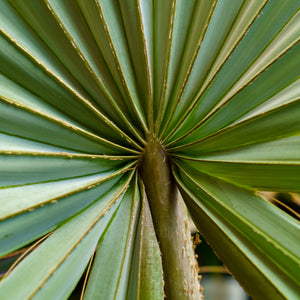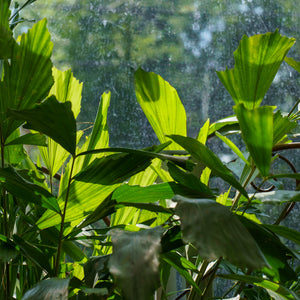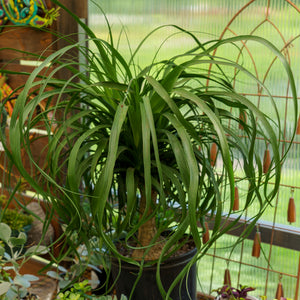The Palm Guide
Houseplant palms bring a sense of tropical serenity and natural elegance to any indoor space. With their lush, arching fronds and impressive forms, palms are perfect for creating a tranquil atmosphere in homes and offices alike. These versatile plants thrive in a variety of conditions and are known for their ability to elevate interiors with minimal effort. Whether you’re seeking to enhance your indoor plant collection, create a statement feature, or add greenery to your decor, palms offer a captivating solution. Explore our Palm Guide to learn more about cultivating and caring for these graceful plants, and discover how to incorporate them into your home for lasting beauty and charm.

About
Palms are a diverse group of plants belonging to the Arecaceae family, with species native to tropical and subtropical regions around the world. Known for their long, slender stems and feathery or fan-shaped fronds, palms are synonymous with exotic landscapes and tranquil environments. As houseplants, palms are admired for their ability to thrive indoors and adapt to varying light and humidity conditions.
Common houseplant palms include varieties such as the Parlor Palm, Majesty Palm, and Cat Palm, each offering unique aesthetic appeal. While some palms have a compact, manageable size ideal for smaller spaces, others grow into majestic specimens that create bold focal points in larger rooms.
In addition to their beauty, houseplant palms contribute to improved indoor air quality by filtering toxins and adding oxygen to the environment. Their calming presence and ability to evoke a tropical ambiance make them a favorite among plant enthusiasts and interior designers.
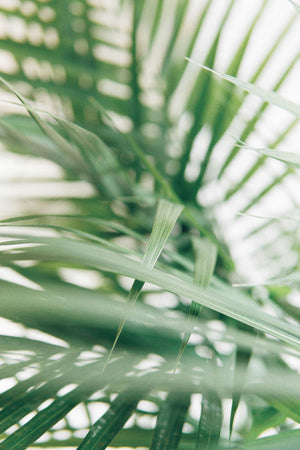
Planting
Proper planting is essential for the healthy growth of houseplant palms. Follow these guidelines for success:
- Soil: Palms thrive in well-draining potting soil. Use a mix designed for palms or create your own by combining regular potting soil with sand or perlite to improve drainage.
- Light: Palms prefer bright, indirect light, though some varieties can tolerate low light conditions. Avoid prolonged exposure to direct sunlight, which can scorch the fronds. Rotate the plant occasionally to ensure even growth.
- Watering: Keep the soil consistently moist but not soggy. Allow the top inch of soil to dry out between waterings. Overwatering is a common issue with palms, so ensure proper drainage to prevent root rot.
- Humidity: Palms prefer moderate to high humidity levels. Increase humidity by misting the fronds regularly, placing a humidifier nearby, or using a pebble tray with water.
- Temperature: Maintain temperatures between 65-80°F (18-27°C). Protect palms from cold drafts, sudden temperature changes, and frost, which can damage their leaves and roots.
- Containers: Choose a pot with drainage holes to prevent waterlogging. Select a container that accommodates the palm’s root system while allowing for some growth.
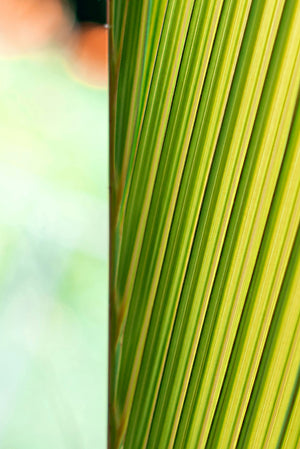
Care
With the right care, houseplant palms can thrive for years, adding timeless beauty to your space. Follow these care tips for optimal results:
- Watering: Reduce watering during the winter months when the plant’s growth slows. Always check the soil’s moisture level before watering.
- Fertilizing: Feed palms with a slow-release fertilizer or a water-soluble fertilizer formulated for palms. Apply every 6-8 weeks during the growing season (spring and summer). Avoid over-fertilizing, which can lead to salt buildup.
- Pruning: Remove yellowing or damaged fronds to maintain the plant’s appearance and encourage healthy growth. Use clean, sharp scissors or pruning shears. Avoid cutting green fronds, as they provide vital nutrients to the plant.
- Pests and Diseases: Check regularly for pests such as spider mites, mealybugs, and scale insects. Treat infestations promptly with insecticidal soap or neem oil. Proper watering and airflow can help prevent fungal diseases.
- Repotting: Repot palms every 2-3 years or when they outgrow their container. Use fresh potting mix and a slightly larger pot to support their growth.
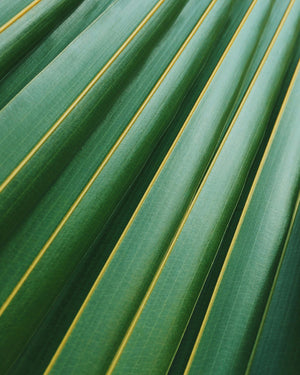
How To Use
Houseplant palms are a versatile choice for enhancing interiors. Here’s how you can use them to create stunning spaces:
- Indoor Decor: Add palms to living rooms, entryways, or dining areas to create a bold statement. Their lush fronds soften corners and fill empty spaces, bringing life and elegance to your decor.
- Office Spaces: Place palms in offices to create a calming environment. Their air-purifying qualities and aesthetic appeal make them ideal for workspaces.
- Bedrooms: Use palms like the Parlor Palm or Majesty Palm in bedrooms to evoke a serene, tropical vibe. Their ability to filter air can contribute to a healthier sleeping environment.
- Group Arrangements: Pair palms with smaller houseplants to create layered displays with varying heights and textures. This adds depth and interest to your space.
- Patio and Balcony: During warm months, palms can be placed on patios or balconies to create a tropical retreat. Ensure they are protected from harsh sunlight and cold temperatures.
- Statement Pieces: Larger palms such as the Bismarck Palm or Bottle Palm can serve as standalone statement pieces, commanding attention and enhancing large, open spaces.
Whether used individually or as part of a larger plant collection, palms bring sophistication and a sense of tranquility to any setting.
Conclusion
Houseplant palms are a timeless and versatile addition to any indoor space. With their graceful fronds, low-maintenance nature, and ability to improve air quality, palms enhance both the beauty and functionality of your environment. By providing proper care and attention, you can enjoy these stunning plants for years, creating a tropical oasis in your home.
From cozy apartments to spacious homes, palms fit seamlessly into various interior styles, offering a touch of elegance and relaxation. Let the natural charm of palms transform your space into a serene retreat, enriching your surroundings with their enduring appeal and lush greenery.

